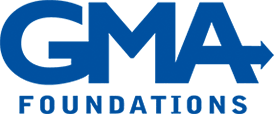
Over 20 years ago, the Anna B. Stearns Charitable Foundation launched its Girls’ Initiative to amplify support for women and girls. More recently, the foundation’s board, historically mostly women, expanded its equity and inclusion focus to include race and culture for both grantmaking and board composition. Leadership sees its own diversity as essential to driving change.
Note: this article first appeared on Exponent Philanthropy’s blog
Expanding one’s diversity, equity and inclusion focus
Sylvia Simmons, an African American trustee who served on the board from 1996 until 2021, helped drive this evolution.
“I’ve seen a lot of changes in our practices and in our culture,” she says. “When I joined, there was a focus on girls’ development and women’s self-sufficiency. We were looking at organizations that moved girls forward, particularly in terms of self-esteem. Next, we started to think about who was leading the organizations that we were funding.”
This led to some surprises.
“We were just astounded at the lack of diversity of the boards and leadership staff of many organizations serving women and girls of color. They didn’t reflect the communities that they served,” says Simmons.
Looking outward: diversity in grantmaking practices
Now, trustees consider the diversity of a nonprofit, not just for diversity’s sake, but because it drives impact. Thus, the foundation:
- Collects information about clients, board and staff diversity using a standardized form and probing questions on grant applications
- Added a non-discrimination policy to grant requirements
- Created a DEI subcommittee to guide internal conversations and learning
- Explicitly named diversity, equity and inclusion (DEI) as a grantmaking priority
- Engages peers in philanthropy to share their DEI work and methods at Stearns Foundation board meetings, and through formal interviews
These actions have focused discussions and, at times, led to denied or decreased funding for programs that lacked progress on leadership diversity.
“It’s so important that the boards and staff—the people making decisions—reflect the people they are serving,” says Simmons.
But how do you know if an organization is truly inclusive? Even if it’s recruiting a more diverse board or staff, you should also consider the organizational dynamics.
“Numbers don’t always tell the whole story,” says trustee Alexandra Oliver-Dávila, who joined the Stearns board in 2017.
Go beyond the numbers. Who holds leadership positions? How does the organization value its staff and offer room for growth into leadership?
The Stearns approach is not adversarial, however. Trustees know there’s value in both challenging and supporting grantees. While insisting on a high level of DEI performance, Simmons says,
“Don’t forget to ask, how can we help?”
Looking inward: board composition
Eventually, the Stearns Foundation’s scrutiny extended to its own board. Did it reflect the communities it aimed to serve?
“We’re asking questions from grantees about diversity, so that means we have to ask those questions of ourselves,” says Oliver-Dávila.
Once nearly all-white, the board evolved to include two Black, two Latina, and four white women last year. They represent a breadth of professional backgrounds and lived experiences, from leading non-profits to community organizing to legal and financial expertise.
Shaping the board is an iterative process. Recruiting new trustees invites reflecting on the intentions to diversify. And as a result, the board’s goals have broadened to also include diversity relating to sexual orientation, gender identity and gender expression.
“I own the lived experience of being a Latina in many predominantly white spaces,” says Oliver-Dávila, who is executive director of Sociedad Latina, a youth development organization serving the Latinx community. “I experience the challenges faced by nonprofit leaders of color: the networks they don’t have, the barriers to fundraising. Every day, I share the experiences of young people and families who live in communities of color. I think I bring that experience to bear. And I hope I bring some ideas about how to make navigating these spaces less challenging and more welcoming for organizations led by people of color.”
A diverse board can become transformational when its members act with intention. By bringing her personal and professional experience to the board table, Oliver-Dávila is making the foundation’s work more relevant and effective. And she encourages colleagues to explore how they personally align with the emerging values of the foundation.
Embracing the journey beyond diversity
Becoming more equitable requires time, continued re-assessment, and space for important and tough conversations.
“We’re continuing to learn together,” says Oliver-Dávila.
Trustees are thinking of ways to further incorporate the foundation’s DEI values directly in their grantmaking. They’re using a DEI lens to examine how they identify new board members, and they’ve begun a book club that explores DEI topics. The board also looks to outside experts for resources, context and guidance.
“We’ve seen the progress and an accretion of awareness on this board,” says Amy Segal Shorey, senior grantmaker and advisor with GMA, which has worked closely with the Stearns Foundation throughout its journey. “We’ve seen the trustees take this issue seriously. We are proud to be affiliated with the Anna B. Stearns Foundation and are actively working to share these lessons learned with our other foundation clients.”
Chaletta Huertas is GMA Foundations’ senior program officer and lead program officer for the Anna B. Stearns Charitable Foundation. Chaletta’s expertise is in evaluating programs, managing complex projects, and maximizing impact. She has deep experience in the fields of early childhood education and youth development for diverse populations.
